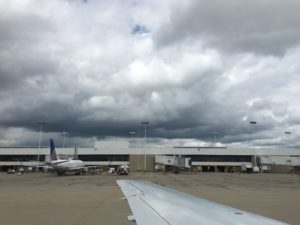No products in the cart.
Amazon adds 210 acres to future Cincinnati airport hub
Amazon’s senior vice president of operations, Dave Clark, announced last week that the Seattle-based retailer had just added a parcel of land to the site of its future air operations hub at the Cincinnati/Northern Kentucky Airport (CVG), following last year’s plans to invest US$1.5 billion into the project.
“Amazon Air [is] getting ready for take-off in KY!” Clark tweeted. “Just added 210 acres of land as part of the future CVG air hub.”
The e-commerce giant is currently building a massive air freight hub at CVG, with construction due to start in 2019, according to airport officials. Before the expansion, the project originally was going to involve 900 acres to handle up to 100 aircraft at once.
Amazon’s future airfreight hub, just 650 kilometers northeast of FedEx’s Memphis (MEM) hub, has stoked rumors that Amazon is on a path toward direct competition with the integrators. Now sized at more than 1,100 acres, the planned CVG hub will be similar in size to the global hubs of the biggest cargo airlines. FedEx’s MEM hub is just over 900 acres.

The CVG hub will work on both national and international levels. The location allows Amazon’s trucks to reach 11 fulfillment centers within a few hours. On the international level, Deutsche Post-DHL moves a lot of its volumes through CVG, allowing Amazon to transfer packages abroad.
The Kentucky Economic Development Finance Authority’s board has tentatively approved $40 million in tax incentives for Amazon over the next 10 years, on the condition that it meets local hiring commitments.
Tax breaks of that magnitude aren’t unusual for Amazon, which has an entire department dedicated to leveraging tax relief from the locations it serves, led by Michael Grella, a specialist in economic development tax credits. New Jersey, for example, rolled out a $7 billion red carpet for Amazon’s yet-to-be announced second headquarters, should it choose the Garden State.
At the same time, Amazon has come under fire recently for “double-dipping,” after a new study by Policy Matters Ohio found that more than 10 percent of Amazon’s Ohio employees received food stamps. Amazon’s critics argue that those generous breaks should translate into living wages, but so far, Amazon hasn’t responded to the latest allegations.
The Kentucky Economic Development Finance Authority has stipulated that average wages must be $26 per hour, but that’s an average, and Amazon’s warehouse workers might be forced to look beyond their full-time gigs, to the state, to make ends meet.

















